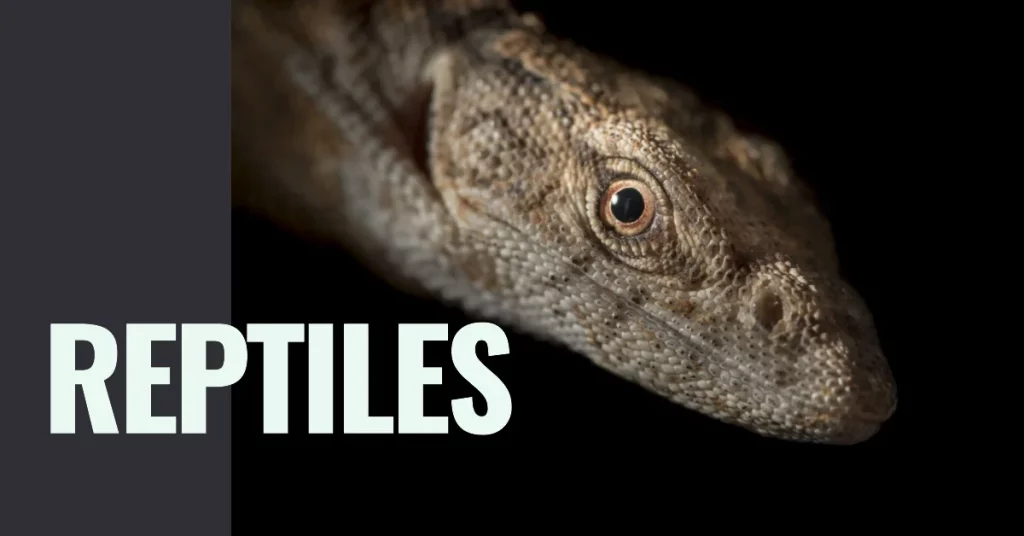What is Difference Between Amphibians And Reptiles?
To provide students with a comprehensive understanding of the distinctions between amphibians and reptiles, including their key features, behaviors, and examples.
Amphibians and reptiles are two classes of animals that belong to the same phylum (Vertebrata), sharing many similarities like being cold-blooded (ectothermic) and having a vertebrate (backbone).
There are some key difference between reptiles and amphibians let’s find out.
Here is a table that summarizes the key differences between amphibians and reptiles:
| Feature | Amphibians | Reptiles |
|---|---|---|
| Skin | Moist, permeable | Dry, scaly |
| Reproduction | Lay eggs in water | Lay eggs on land |
| Habitat | Moist environments | Wide variety of habitats |
| Diet | Carnivores | Carnivores, herbivores, or omnivores |
| Eggs | Jelly-like, no hard shell | Hard shell |
| Respiration | Skin, lungs, mouth | Lungs only |
| Metamorphosis | Yes | No |
| Temperament | Shy and timid | Shy or aggressive |
What is Amphibians (Class: Amphibia)

Amphibians are cold-blooded, four-limbed vertebrates that typically start out as larvae living in water, but some species have developed behavioral adaptations to bypass this. They inhabit a wide variety of habitats, with most species living within terrestrial, fossorial, arboreal or freshwater aquatic ecosystems.
If we include the things in common of amphibians and amniotes in the paraphyletic group. All modern amphibians are included in the subclass Lissamphibia, which is usually considered a clade, a group of species that have evolved from a common ancestor. The three modern orders are Anura (the frogs), Caudata (or Urodela, the salamanders), and Gymnophiona (or Apoda, the caecilians).
Key characteristics and Behaviors
- Breathing: Amphibians usually respire through their skin (gills in larval stage).
- Skin: Mucus-covered, porous skin that requires moisture.
- Habitat: Most amphibians live near water and have a dual life – both terrestrial and aquatic.
- Reproduction: Amphibians lay their eggs in water, going through a larval stage (e.g., tadpoles) followed by a metamorphosis into adult forms.
- Body Temperature: Regulated by external environment (ectothermic).
- Diet: Insects, small invertebrates, and even other amphibians.
Examples of Amphibians
- Frogs and Toads
- Salamanders and Newts
- Caecilians
Read related post Difference Between Ocelot and Margay
What is Reptiles (Class: Reptilia)

Reptiles are tetrapods (four-limbed vertebrates) that are ectotherms (cold-blooded), amniotes (meaning their embryos develop inside a protective amniotic sac), and have scales or scutes. They are descended from the synapsid amniotes, which also include mammals.
There are four living orders of reptiles:
- Testudines (turtles and tortoises)
- Crocodilia (crocodiles, alligators, caimans, and gharials)
- Squamata (lizards and snakes)
- Rhynchocephalia (tuataras)
Reptiles live everywhere – deserts, forests, oceans, mountains. They’re important in ecosystems as hunters, hunted, and decomposers.
Key characteristics and Behaviors
- Breathing: Reptiles breathe using lungs.
- Skin: Dry, scaly skin made of keratin.
- Habitat: Reptiles live on land (some may spend time in the water).
- Reproduction: Lay leathery eggs on land (except some species, such as alligator and crocodile, lay eggs in the water).
- Body Temperature: Regulated by external environment (ectothermic).
- Diet: Carnivorous, herbivorous, or omnivorous, depending on species.
Examples of Reptiles
- Turtles and Tortoise
- Lizards
- Snakes
- Crocodiles and Alligators
Key Differences Between Amphibians and Reptiles

- Skin: Amphibians have smooth, moist skin that helps them absorb water. Reptiles have dry, scaly skin that helps them retain water.
- Respiration: Amphibians breathe through their skin, lungs, and mouth. Reptiles breathe through their lungs only.
- Eggs: Amphibians lay jelly-like eggs in water. Reptiles lay hard-shelled eggs on land.
- Life cycle: Amphibians change from tadpoles to adults in a process called metamorphosis. Reptiles do not undergo metamorphosis.
- Distribution: Amphibians can find mostly in moist habitats, such as forests, swamps, and wetlands.
Reptiles found in many different places like deserts, forests, and grasslands. - Body Temperature: Amphibians are animals that rely on their environment to control their body temperature. They are ectothermic, which means their internal temperature changes based on the surrounding. They typically gravitate to warm environments to raise their body temperature and cool environments to lower it. Reptiles are also ectothermic. However, many reptiles are adapted to better regulate their body temperature by basking in the sun or hiding in shaded areas.
- Reproduction: Most amphibians reproduce through external fertilization. Females will lay eggs in water, and males fertilize the eggs externally. Amphibians lay their eggs in water. The eggs hatch into larvae, such as tadpoles. These larvae then undergo a transformation called metamorphosis to become adult amphibians.
- Habitat Requirements: Amphibians are closely tie wit aquatic environments, and they require moisture-rich habitats like ponds, swamps, or wetlands throughout their lives. Reptiles find wide variety of habitats like deserts, forests, grasslands, and wetlands.
Similarities between reptiles and amphibians

- Both reptiles and amphibians belong to the same phylum, Chordata, indicating their shared evolutionary history.
- Both are ectothermic which meaning their body temperature is regulated by external environmental factors.
- Both classes lay eggs, although the location and nature of the eggs differ. Amphibians lay their eggs in water, while reptiles lay their eggs on land.
- Amphibians and reptiles exhibit a dual life strategy, spending time in both aquatic and terrestrial habitats at different stages of their life cycles.
- Both classes respire through their skin to some extent, although amphibians rely on cutaneous respiration more significantly than reptiles.
IV. Interactive Activities
- Amphibians vs. Reptiles Quiz: Divide students into two groups and quiz them on key features and differences between amphibians vs reptiles.
- Habitat Exploration: Observe local habitats and identify species of reptiles and amphibians and discuss their key features.
- Group Discussion: Split students into small groups and have them discuss and compare amphibians’ and reptiles’ adaptability to environments and their role in the ecosystem.
Refence Links




